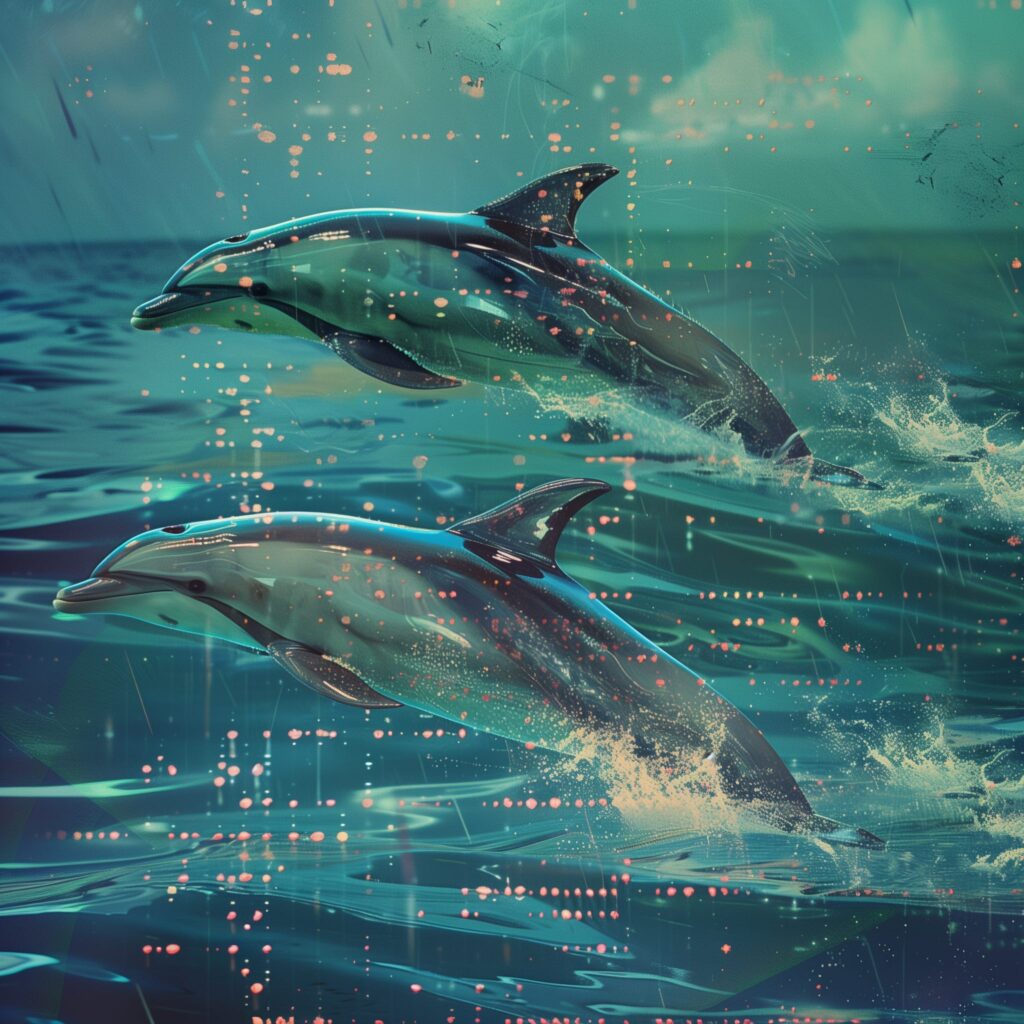Relativity of Perspective – Part 15 of The Chemistry of Time
We are in the early days of AI and software is now effectively processing enormous sets of data which are beyond the analytical ability of normal persons. The utility of this is rather overstated but there are peculiar cases where it is likely to prove enormously useful. One that I look forward to is in the processing of “language” data from the communication of animal species, for example dolphins. We have been recording the squeaks and whistles of dolphins for years and there is sufficient data in those records to suggest that a sophisticated amount of information is being communicated between dolphins. Deciphering this is an enormous and daunting task because we have limited clues to work with. A comparison could be made to the deciphering of ancient language scripts – the Egyptian heiroglyphs or the Mayan glyphs are two examples. Both were deciphered relatively recently and took the work of many very clever people to eventually discern, but it was the availability of translations which put it over the top. The Rosetta Stone famously contained the same text in three scripts, two of which were well understood. This made it possible to piece together the phonetic and linguistic code of the heiroglyphs and finally make it possible to again read those writings. In the case of the Mayan writing it was necessary to apply structural features of other languages and writing systems against the glyphs until familiar patterns emerged. Both cases of decipherment were aided by the ongoing use of a related spoken language and the fact that these were human languages, of which we have thousands of other iterations and examples to compare against. In the AI age it is possible to use software to look for these patterns and have it almost immediately discover those which may have required serendipitous exposure in the past.
In the case of animal speech this will require something beyond just the pattern-matching of the AI systems. They can speed up the comparison of all available squeak-and-whistle recordings and point us toward repetitions that usually indicate consistent meaning, but it will take a person and the creativity that is natural to our kind to make the real breakthrough connection to begin interpreting what is being said. The challenge is that animals are not humans and as such there is no reason to assume that the universal grammatical patterns of human speech will be present in their communication. Humans do not merely translate our thoughts into words but rather we process the world through words and concepts and then express that verbally using spoken words that can be heard by another human, who will be able to recognize the concept or information we are expressing because the other human has the same set of senses, input, and experiences with the world and language. This universality is why we are frequently able to decipher older written languages – they all work in a more or less similar way. The animals, despite our frequent error of anthropomorphizing them, do not appear to share this precise universal grammar. If we could hear what the dolphins were saying chances are we wouldn’t have any context through which to understand it. For this reason the problem will only be solved when the right person, probably a Pisces, begins to study the data which the AI makes possible to even access. That person will approach the problem differently, taking the data for what it is rather than we expect “language” to be. The issue isn’t the grammatical structure but rather what information is being perceived as worthy of sharing between these animals. What does a dolphin know and what does it need to communicate to other dolphins? Those are the questions which lead to the decipherment of their language.
It is this same approach which is most helpful in studying the system. For the last few chapters we’ve been in the woods, with the foxes, and many readers may have felt like they were in the weeds trying to sort out the information being presented. The things which the signs communicate to us about time and our reality are not what we expect to find and it is difficult to place them against other measurable substances utilized in our physical sciences. The structural and systematic approach is extremely consistent with other scientific practice and even reveals common patterns with things like Chemistry, but the elements themselves feel quite foreign and even alien. To learn to communicate in the language of astrology is in some way like learning to speak with the foxes or the dolphins. What we think they should say is biased by our humanity and we must instead pay attention to what they do say and how they say it. By spending time with them and familiarizing ourselves with their habits and tendencies we can observe what is important to their lives and which contexts matter to them – this is how you gain clues about what they may be saying.
In the case of the system we have the elements already delineated for us and it is only necessary to allow them to be as they are. The elements are there and they give off their signatures in ways recognized and studied and documented for thousands of years. If you allow yourself to take them as they are you will begin to see them out in practice in the real world. You will begin to know their glyphs and vocabulary, and in particular they will illuminate your memories because those are recordings of times, and it turns out that the parts which we really remember have a remarkable pattern to them. The elements are the formative components of a time and as such the memory of a time will be a memory of the combined elements in their unique formula for that moment, because that is the part that “matters.” Memory speaks the same type of language that the system does, and shares with it the same universality that human languages do between each other, because they are sort of the same species. Try now to remember an old day long ago and you will find that it is easier to describe with the signs than it is with the words of your verbal language. I look forwarding to finding out if the dolphins would describe it in the same way.


Leave a Reply